
European Journal of Hybrid Imaging
Scope & Guideline
Bridging Disciplines Through Hybrid Imaging Insights
Introduction
Aims and Scopes
- Hybrid Imaging Techniques:
The journal emphasizes the development and application of hybrid imaging techniques that combine different modalities, such as PET/CT, PET/MRI, and SPECT/CT, enhancing the diagnostic capabilities in oncology, cardiology, and neurology. - Clinical Applications and Innovations:
A core focus is on the clinical applications of hybrid imaging, investigating its role in disease diagnosis, staging, treatment evaluation, and monitoring therapeutic responses in various malignancies and other health conditions. - Artificial Intelligence in Imaging:
The integration of artificial intelligence and machine learning methods in imaging analysis and interpretation is a significant area of interest, aiming to improve diagnostic accuracy and streamline imaging workflows. - Radiomics and Quantitative Imaging:
The journal explores radiomics and quantitative imaging approaches, which involve extracting high-dimensional data from medical images to predict clinical outcomes and improve personalized medicine. - Novel Radiotracers and Imaging Biomarkers:
Investigation of new radiotracers and imaging biomarkers for various cancers and diseases is a consistent theme, focusing on their diagnostic and prognostic value.
Trending and Emerging
- Advanced Cancer Imaging Techniques:
There is a growing emphasis on advanced imaging techniques for cancer diagnosis and treatment monitoring, including studies on novel radiotracers and innovative imaging protocols that enhance tumor characterization. - AI and Machine Learning Applications:
The application of artificial intelligence and machine learning in imaging analysis is on the rise, with increasing research focused on automating image interpretation and improving diagnostic accuracy. - Multi-parametric Imaging Approaches:
The trend towards multi-parametric imaging, combining various imaging modalities to provide comprehensive assessments of diseases, particularly in oncology, is gaining traction. - Quantitative Imaging and Radiomics:
The increasing focus on quantitative imaging metrics and radiomics for predicting treatment response and patient outcomes is emerging as a critical area of investigation. - Personalized Medicine in Imaging:
Research exploring the role of hybrid imaging in personalized medicine, particularly in tailoring treatments based on individual imaging biomarkers and characteristics, is becoming more prominent.
Declining or Waning
- Traditional Imaging Techniques:
There is a noticeable decline in papers focusing solely on traditional imaging techniques without the integration of hybrid modalities, as the field increasingly emphasizes the advantages of combining multiple imaging technologies. - Basic Research on Imaging Physics:
Research centered around the fundamental physics of imaging technologies has waned in favor of more applied clinical studies, reflecting a shift towards practical and translational research. - Generalized Case Reports:
The journal has seen a reduction in generalized case reports that do not provide significant clinical insights or advancements in hybrid imaging techniques, favoring more impactful studies. - Single Modality Imaging Studies:
There is a decreasing trend in the publication of studies focusing exclusively on single modality imaging (e.g., PET or CT alone), as the journal emphasizes multimodal approaches for enhanced diagnostic capabilities.
Similar Journals
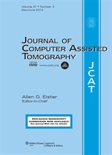
JOURNAL OF COMPUTER ASSISTED TOMOGRAPHY
Illuminating the Path to Advanced Diagnostic TechniquesJOURNAL OF COMPUTER ASSISTED TOMOGRAPHY, published by Lippincott Williams & Wilkins, stands as a vital resource in the field of Radiology, Nuclear Medicine, and Imaging. Since its inception in 1977, this journal has been dedicated to advancing the understanding and application of computer-assisted tomography, emphasizing innovative research and clinical practices that enhance diagnostic imaging techniques. With an impact factor reflective of its rigorous scholarship and relevance—ranking in the Q3 category—the journal serves as an essential platform for contributors and readers alike, navigating the challenges and opportunities within a rapidly evolving field. Researchers, professionals, and students are encouraged to engage with the rich repository of articles that cover emerging technologies, clinical applications, and theoretical advancements, collectively fostering a deeper comprehension of imaging sciences. Although not currently designated as an open-access journal, it continues to enhance discourse in the community from its headquarters in Philadelphia, PA, maintaining a commitment to the highest standards of academic excellence.
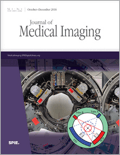
Journal of Medical Imaging
Advancing the Future of Diagnostic ImagingThe Journal of Medical Imaging, published by SPIE-SOC PHOTO-OPTICAL INSTRUMENTATION ENGINEERS, is an esteemed publication in the field of medical imaging, playing a pivotal role in advancing the discipline since its inception in 2014. With an ISSN of 2329-4302 and an E-ISSN of 2329-4310, this journal has garnered significant recognition, evidenced by its Q2 ranking in 2023 within the critical category of Radiology, Nuclear Medicine, and Imaging. The journal is dedicated to presenting cutting-edge research and innovations that enhance diagnostic imaging techniques and methodologies, appealing to a diverse audience of researchers, professionals, and students alike. Offering valuable insights into the interplay of optics and imaging technologies, it serves as a crucial resource for fostering knowledge and collaboration in the medical community. Notably, it holds a competitive rank of #136 out of 333 in its Scopus category, placing it in the 59th percentile—a testament to its influence and relevance in ongoing medical research. Therefore, the Journal of Medical Imaging stands out as an essential platform for disseminating transformative findings and innovations in healthcare imaging.

Nuclear Medicine and Molecular Imaging
Advancing the Frontiers of Nuclear Medicine and ImagingNuclear Medicine and Molecular Imaging, published by SPRINGER HEIDELBERG, stands as a pivotal platform in the interdisciplinary field of radiology and nuclear medicine, focusing on innovative research and developments from 2010 to 2024. With its ISSN 1869-3474 and E-ISSN 1869-3482, this journal aims to disseminate advanced studies that explore the diagnostic and therapeutic applications of nuclear medicine technologies. Operating from Germany, it has positioned itself in the Q3 category within the Radiology, Nuclear Medicine and Imaging sector, showcasing its relevance among peer journals, with a Scopus rank of #204 out of 333. This journal not only serves as an essential resource for researchers and practitioners eager to stay abreast of modern methodologies and findings but also underscores the crucial advancements in molecular imaging techniques. Although currently not an open-access journal, it doesn't detract from its mission to promote knowledge exchange among academia and the medical community, thus paving the way for innovative solutions and improved patient care in nuclear medicine.
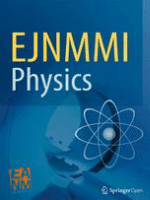
EJNMMI Physics
Unveiling Breakthroughs in Biomedical Engineering and Imaging.EJNMMI Physics, the premier journal for advancements in nuclear medicine and imaging, is published by Springer in Switzerland and has been an open-access outlet since 2014, allowing for broad dissemination of critical research findings. With an ISSN of 2197-7364, the journal aims to bridge the gap between state-of-the-art physics and practical applications in biomedical engineering and radiology. Its impressive Q1 ranking in multiple categories, including Biomedical Engineering, Instrumentation, Radiation, and Radiology, Nuclear Medicine and Imaging, exemplifies its significant impact in the field. The journal boasts exceptional metrics with Scopus rankings placing it in the top echelons across disciplines, including a 6th position out of 58 in Radiation, and serves as an essential resource for researchers, professionals, and students who are eager to contribute to and stay informed about cutting-edge scientific advancements. With a broadening scope until 2024, EJNMMI Physics is an indispensable tool for those dedicated to pushing the boundaries of knowledge in medical physics and imaging technologies.

Clinical Neuroradiology
Transforming Clinical Practice through Cutting-edge Imaging.Clinical Neuroradiology, published by SPRINGER HEIDELBERG, is a leading journal in the fields of neurology and radiology, focusing on the intersection of clinical practice and cutting-edge imaging technologies. With an impressive impact factor and categorized within Q2 in Neurology (clinical) and Q1 in Radiology, Nuclear Medicine and Imaging, this journal is positioned at the forefront of scientific discourse, facilitating high-quality research dissemination from its origins in 2000 through to 2024. Situated in Germany, Clinical Neuroradiology provides a platform for researchers, professionals, and students to explore the latest advancements and insights in neuroimaging, ensuring that its readership remains at the vanguard of clinical practice. While it does not offer open access, the journal remains committed to fostering a vibrant academic community dedicated to enhancing patient care through innovative neuroradiological techniques and findings.

Iranian Journal of Radiology
Connecting Researchers for a Brighter Imaging FutureWelcome to the Iranian Journal of Radiology, a pivotal platform dedicated to advancing the field of radiology, nuclear medicine, and medical imaging. Published by BRIEFLAND, this journal aims to disseminate high-quality original research, reviews, and clinical studies that contribute substantially to the global scientific community. Established in 2008 and spanning until 2024, the journal provides an essential archive of knowledge in a rapidly evolving discipline. Although it currently holds a Q4 quartile ranking in the 2023 Scopus metrics, it serves as an important resource for both emerging and established researchers looking to submit their work. Located in the Netherlands, the journal is committed to open dialogue and collaboration amongst professionals in the field, reflecting its accessibility and relevance to both practitioners and academics. With its continued growth and commitment to quality, the Iranian Journal of Radiology is poised to enhance understanding and innovation in diagnostic imaging.
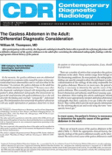
Contemporary Diagnostic Radiology
Exploring the Future of Imaging TechniquesContemporary Diagnostic Radiology is a pivotal journal in the field of medical imaging and radiology, published by Lippincott Williams & Wilkins. With an ISSN of 0149-9009 and an E-ISSN of 1938-1395, this journal serves as an essential platform for disseminating high-quality research and advances in diagnostic radiology and related disciplines. While it is categorized in the lower quartiles (Q4) for its performance in the 2023 rankings in both Neurology, Radiology, Nuclear Medicine and Imaging, and Surgery, its focus on emerging technologies and methodologies in imaging continues to provide valuable insights for practitioners and researchers alike. The journal’s scope includes innovative diagnostic tools, imaging techniques, and case studies, fostering collaboration and knowledge sharing in the medical community. Although it does not offer open access options, its commitment to contributing to the ongoing dialogue in clinical imaging is undisputed, making it an essential resource for professionals seeking to stay abreast of current trends and research in the rapidly evolving landscape of diagnostic radiology.

Japanese Journal of Radiology
Connecting Researchers and Practitioners in RadiologyThe Japanese Journal of Radiology, published by SPRINGER, serves as a premier platform for disseminating cutting-edge research and clinical advancements in the fields of radiology, nuclear medicine, and imaging. With an ISSN of 1867-1071 and E-ISSN 1867-108X, this journal has established itself as a vital resource for practitioners, researchers, and students alike. Renowned for its high-quality peer-reviewed articles, it currently enjoys a respectable impact factor within the Q2 category of Scopus rankings, placing it in the 69th percentile among 333 journals in its field. The journal has seen consistent convergence of research from 2009 to 2024, further underscoring its commitment to advancing the understanding of radiological practices. Importantly, the journal offers Open Access options to facilitate widespread dissemination of knowledge, ensuring that vital research reaches its audience without barriers. Addressed in Japan, the Japanese Journal of Radiology plays a critical role in enhancing the global discourse on medical imaging, making it an essential resource for anyone engaged in this dynamic field.
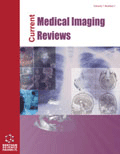
Current Medical Imaging
Unveiling the Future of Imaging in MedicineCurrent Medical Imaging is a reputable journal published by Bentham Science Publishers, specializing in the dynamic field of medical imaging, with a strong emphasis on both clinical applications and technological advancements. Established in 2007, the journal has made significant contributions to the fields of Internal Medicine and Radiology, consistently ranking in the Q3 quartile for these categories as of 2023. The journal's ISSN 1573-4056 and E-ISSN 1875-6603 ensure wide accessibility for scholarly communication, although it operates under a traditional access model. With its continuous publication from 2011 to 2024, Current Medical Imaging aims to bridge the gap between advanced imaging techniques and their practical application in patient care, making it indispensable for researchers, healthcare professionals, and students eager to stay at the forefront of innovations in imaging technology and clinical practice.
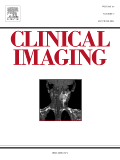
Clinical Imaging
Exploring New Frontiers in Clinical ImagingClinical Imaging, published by Elsevier Science Inc, is a renowned journal dedicated to the field of radiology, nuclear medicine, and imaging. With an ISSN of 0899-7071 and an E-ISSN of 1873-4499, this esteemed publication has established its significance in advancing imaging science since its inception in 1989 and continues to make impactful contributions to the discipline through 2024. The journal holds a prestigious Q2 ranking in the category of Radiology, Nuclear Medicine, and Imaging, reflecting its critical role in bridging research and clinical practice. Currently ranked #113 out of 333 by Scopus, with a notable 66th percentile, it offers a platform for disseminating high-quality research, reviews, and case studies that inspire innovation and enhance imaging techniques. Although it primarily functions as a subscription-based journal, it remains dedicated to accessibility and the dissemination of pivotal findings that inform both academia and clinical settings. Clinical Imaging is essential for researchers, professionals, and students alike, offering insights that shape the future of diagnostic imaging.